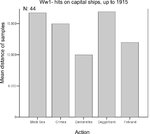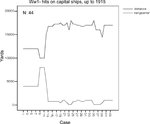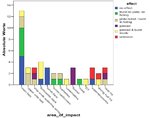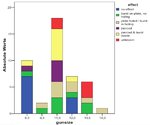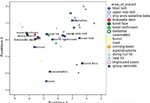delcyros
Tech Sergeant
Preliminary note:
I have been submerged for a while now and am now going to finish my study on major calibre impacts of naval guns versus naval armour (capital ship armour) in ww1.
Some of the results encountered have surprised me, so I will give only brief and preliminary notes at this time.
Sources:
Note that no attempts are made to deal with primary sources first hand. Altough I would be more than happy to get my hands on original docs!
Literature:
My primary source for this study is the comprehensive work of J. Campbell, Jutland. An analysis of the fighting. This work thoroughly goes through hit after hit in the major battle of Jutland. I also used other works (Sumida, Jones, Lambert, Massie, Marder) to complement informations gained by Campbell, esspeccially for non Jutland Combats.
Actions covered:
Falklands, Doggerbank, Jutland, Dardanelles, Black Sea engagements. For comparative reasons, I also included the post war firing trials on SMS BADEN with the improved APC shells.
Statistical background:
All in all over 400 major calibre impacts have been analysed for drawing conclusions. Statistical investigations are based on the statistical package of the social sciences (SPSS).
Intention of the study:
My primary intention of this study will be composed of the following aims:
A) Probability of hitting different parts of an ship. For saying so, I have run around comments like:
"...armour belts were virtually never hit in ww1 and ww2..." -Nathan Okun
or
"...deck armour is more important because the number of hits on armour belts are negliable" -I. Charles.
while reading these comments, I naturally asked myselfe (and the commentators) on what sources and statistics these comments are based on. I have never got any other answer than authoritative comments (...he said so), nor could I get statisfying informations in the books aviable on the matter. I believe, this justifies an investigation of this very question in detail with the help provided by the aforementioned authors and the sound statistical services provided by SPSS.
B) Relative performance of penetration from APC, CPC and base fuzed HE-rounds on their respective target plates. These are "REAL WORLD" -results, not the prooving ground results known from other studies. If a projectile pierces in a condition fit to burst a plate installed as it was on the ships structure, this is a very serious issue.
C) Stability of the filler to rapid deceleration.
I also would like to encourage as many as possible to comment and contribute to the problems outlined above. I run this thread in order to cover multiple problems associated with the big ´ol guns. From time to time I will submit results, starting with A) next week.
best reagrds,
delc
I have been submerged for a while now and am now going to finish my study on major calibre impacts of naval guns versus naval armour (capital ship armour) in ww1.
Some of the results encountered have surprised me, so I will give only brief and preliminary notes at this time.
Sources:
Note that no attempts are made to deal with primary sources first hand. Altough I would be more than happy to get my hands on original docs!
Literature:
My primary source for this study is the comprehensive work of J. Campbell, Jutland. An analysis of the fighting. This work thoroughly goes through hit after hit in the major battle of Jutland. I also used other works (Sumida, Jones, Lambert, Massie, Marder) to complement informations gained by Campbell, esspeccially for non Jutland Combats.
Actions covered:
Falklands, Doggerbank, Jutland, Dardanelles, Black Sea engagements. For comparative reasons, I also included the post war firing trials on SMS BADEN with the improved APC shells.
Statistical background:
All in all over 400 major calibre impacts have been analysed for drawing conclusions. Statistical investigations are based on the statistical package of the social sciences (SPSS).
Intention of the study:
My primary intention of this study will be composed of the following aims:
A) Probability of hitting different parts of an ship. For saying so, I have run around comments like:
"...armour belts were virtually never hit in ww1 and ww2..." -Nathan Okun
or
"...deck armour is more important because the number of hits on armour belts are negliable" -I. Charles.
while reading these comments, I naturally asked myselfe (and the commentators) on what sources and statistics these comments are based on. I have never got any other answer than authoritative comments (...he said so), nor could I get statisfying informations in the books aviable on the matter. I believe, this justifies an investigation of this very question in detail with the help provided by the aforementioned authors and the sound statistical services provided by SPSS.
B) Relative performance of penetration from APC, CPC and base fuzed HE-rounds on their respective target plates. These are "REAL WORLD" -results, not the prooving ground results known from other studies. If a projectile pierces in a condition fit to burst a plate installed as it was on the ships structure, this is a very serious issue.
C) Stability of the filler to rapid deceleration.
I also would like to encourage as many as possible to comment and contribute to the problems outlined above. I run this thread in order to cover multiple problems associated with the big ´ol guns. From time to time I will submit results, starting with A) next week.
best reagrds,
delc

